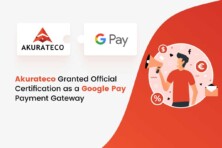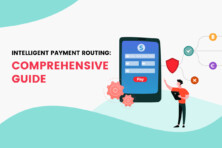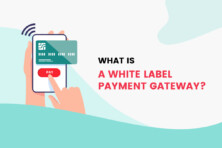
Vladimir Kuiantsev
CEO of Akurateco
If you’re looking for a way to enter the payments industry, starting your own payment processing company seems to be the easiest way to go. However, with fierce competition and tedious red tape, the industry isn’t as welcoming to newcomers as one might think. In this article, we’ll explain how to launch a PSP with zero development cost and cut the processing costs by 50% with the right software choice.

How to launch a PSP with zero development cost. Source: pexels.com
Why launch a payment processing company
Because payments are hot.
They really are. People switch from cash enjoying an opportunity to pay smoothly with a swipe of a credit card. As a result, in 2015 alone people spent more than 178$ trillion in non cash transactions.
Those numbers have grown since with an emergence of new contactless payment methods. By 2022, 33% of American consumers will prefer paying with an e-wallet followed by 27% of those choosing a credit card.
MerchantSavvy reports that by the end of 2024, the size of the mobile payment market will hit $3.08 trillion. But even today 84% of Europeans use a mobile payment app on a regular basis.
All in all, the industry is extremely hot right now. And packed with those who pioneered their way in payments at the dawn of an era. We’re not saying that entering this market is pointless right now. But we are warning you that beating the competition going head-to-head with you for the business will take in-depth expertise of the matter.
You might also like: Cashier technology: the big, the strong, and the best of the industry
How to start your own payment processing company
There are several ways to become a payment processor: to build your own payment gateway, to use a “Box Pack” solution, or to resell a white-label payment system as your own. We will look into each of these options up close so you can analyze the data and make an informed decision.
What’s a “Box Pack” solution?
We don’t hear a lot about this solution. Quite frankly, this is not a very popular choice among payment service providers.
A Box Pack is a licensed copy of the software purchased by an end customer under the full ownership conditions. The latter becomes an owner of the software and can fine-tune it to specific needs of his business either with the assistance of an in-house development team or by outsourcing the task to a team of experts as long as the retailer allows software customization.
Benefits of a “Box Pack” solution:
- One-time payment.
The end customer only has to pay for the software once. The retailer doesn’t charge any additional fees associated with maintenance and technical support because they’re 100% customer’s responsibility. - Using the client’s server.
The software is deployed on the client’s server. One can use all the security measures he finds the most credible to protect the data.
Now, let’s look at the disadvantages of this product.
Disadvantages of the Box Pack:
- High product cost.
The product is extremely expensive. Thus, if you’re a startup owner considering this product, beware that it will raise the barrier of entry for your business. - Own server.
To deploy the software, you’ll need to purchase your own high-end server for the company. - Slow onboarding.
The onboarding and software setup will take up to several months. This increases your time-to-market and postpones the start of revenue generation. - Multiple Internet lines.
For an uninterrupted system flow, you will need multiple Internet lines for the office and an additional power source. - System administration.
To maintain and run the system, you’ll need to hire a System Administrator. This will cost you at least 3.000 USD a month or more if you need a whole team to support your transaction flow. - Technical support.
Finally, you will require an expert help from a Technical Support Representative to run your system, fix the bugs, resolve issues, and assist your customers every step of the way. And this sort of help translates into an additional salary fund for anin-house employee.
Among other issues with this choice might be a lack of local payment methods, and insufficient functionality. Implementing changes into the platform and adding new connectors are essential to the well-being of your business. Thus, before committing, make sure that your retailer allows you to fine-tune the software to facilitate your transactions and meet your needs.
To build or not to build your own gateway?
Starting an ISO and developing your own payment software seems to be the first thing that comes to mind when payment enthusiasts think about becoming a processor. But we have to warn you: it is by far one of the most expensive and time-consuming solutions.
You see, to get started you’ll need to hire a team of developers. And not just any developers. You should be looking for seasoned payment industry experts with an in-depth expertise in a wide range of technology including but not limited to:
- Backend – PHP / Java / .NET / Ruby
- Databases – MySQL, Elasticsearch / Logstash / Kibana
- Frontend – VueJs / Angular / React, JavaScript / TypeScript, Mercure CI/CD
- Fast development, QA, application deployment – Docker, Kubernetes
- QA – Behat / Cucumber, Gherkin
On average, a developer with hands-on experience with the above mentioned tech stack is paid 3.500 USD a month. To build your own payment gateway, you’ll need at least three developers, a DevOps specialist, and an Information Security Officer. Therefore, multiply 3.500 by 5 team members – and you get 17.500 USD in monthly salary fund.
System development and its further compliance with the top-of-the-industry security standards take between 6 to 24 months. Consequently, your payment system will cost you between 105.000 and 420.000 USD.
And the expenses don’t stop there. Once the system is live, your development team will switch from development to maintenance. This includes new payment methods integration, continuous improvement of the gateway, bug fixing, and development of new features.
Therefore, before you decide to build your own payment system, make sure you understand the real cost. Self-built gateway can be a great solution for well-established companies. They can afford both development and maintenance while startups and smaller ventures should consider reselling white-label software.
You might also like: How to spend 50% less on payment processing with white-label payment software
A white-label payment gateway
Last but not least, you can also opt for a white-label payment software to launch your PSP. With it, you get a fully-scalable and brandable software that can be adjusted to meet the needs of your business.
The benefits of this solution include:
1. Zero development cost.
First and foremost, you’re not paying for the development. White-label payment software allows you to resell a ready-made solution without breaking the bank. You get a fully customizable platform, multiple connectors, and 24/7 system maintenance at 0 development cost
2. A variety of payment methods.
As expectations of the end customer grow, white-label payment software providers aim to offer both local and international PMs to meet the needs of a diverse audience. Thus, you’re likely to have all the necessary payment methods available from day one.
3. Full customization.
A team of developers behind the software are there to adjust the platform to your needs. And often, users can customize the software themselves without the involvement from the developers’ side.
4. Increased transaction approval.
As long as the platform offers smart routing and cascading, you can expect a significant growth of your transaction approval ratio.
5. Consolidated data.
Instead of checking multiple back offices for data from different channels, you have it all consolidated in a single platform. You save precious time and money. And you help your key team players focus on their core responsibilities instead of payments-related communication.
6. Security standards compliance.
Obtaining a license requires in-depth expertise and a hours of struggling with the red tape. But you’ll get it all covered with a white-label software.
7. A variety of integration options.
At Akurateco, for instance, we offer two different options: software deployed on company’s servers or on dedicated servers of a client (“on-premise”). This helps customers from different jurisdictions comply with their local security requirements.
Now that we’ve looked at some of the benefits of this solution, let’s see how you can start you own processing company with zero development cost today.
You might also like: 5 Best White Label Payment Gateway Solutions in 2021
How to launch a PSP with zero development cost
It all goes down to these four steps.
1. Find a white-label payment software provider.
Read the reviews, ask around among your peers, check out forums and discussions related to your industry. Make sure to work your way through the buzz around the giants. Smaller companies can be just as secure and innovative. Plus, they often offer lower prices and better flexibility in terms of fine-tuning the software to your specific needs.
2. Request a demo of the system.
At Akurateco, we offer a free Demo of our white-label payment software. We aim to give our potential customers a clear understanding of the key features of the platform and ask their questions before making a final decision.
3. Agree on terms and conditions.
Number of connectors, countries to target, sales volumes you expect, fees, and features you need are on the list of terms and conditions you have to agree on with the provider. Sign the contact, pay the invoice, and, finally…
4. Integrate the software.
This is the final stage. As soon as the platform is up and running, you can start processing your merchants’ transactions.
Final word
This is how you can start your own payment processing company without a development team. If at this time you’re considering becoming a processor, let me offer you a free Demo of Akurateco’s system. During the session we’ll demonstrate its features, explore the interface, and answer your questions.
Vladimir Kuiantsev is the CEO of Akurateco, a cutting-edge SaaS platform with 70+ connectors catering to international businesses. With 10+ years of experience in the payment industry, he’s successfully founded and grown two major payment startups before becoming an executive at Akurateco.
SEE ALSO:









